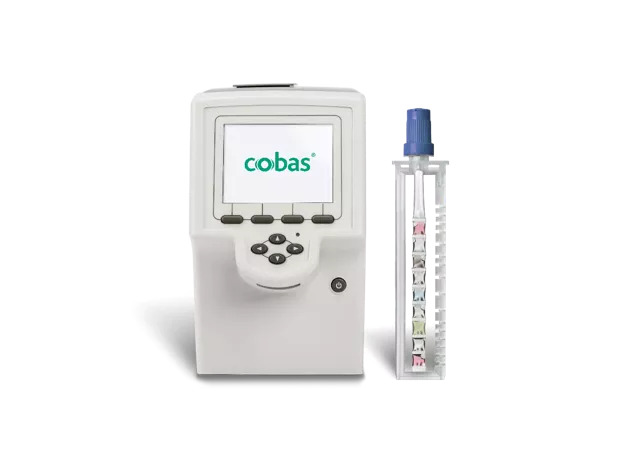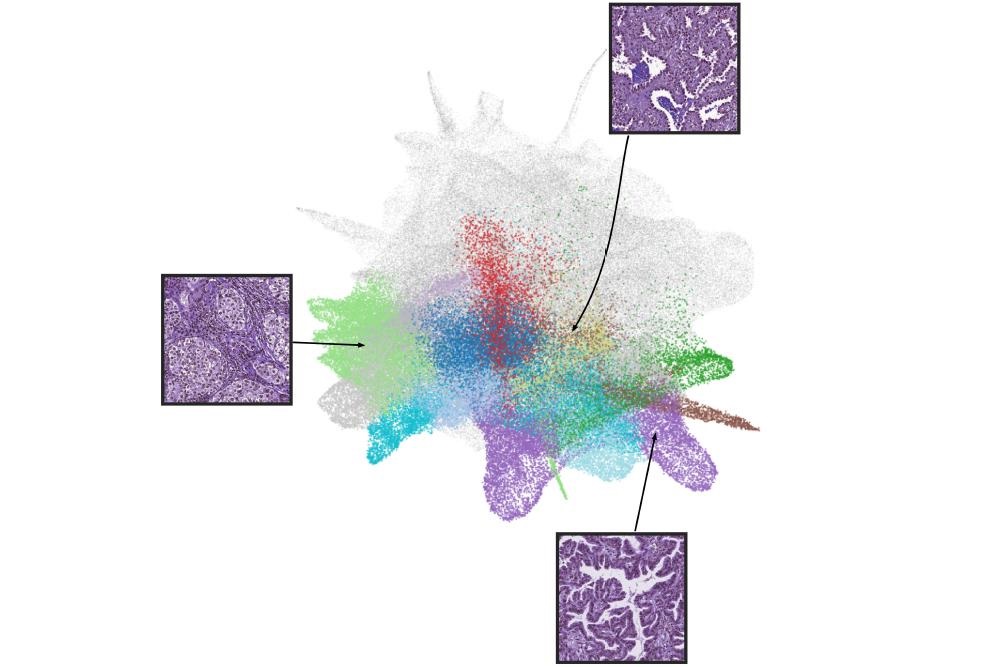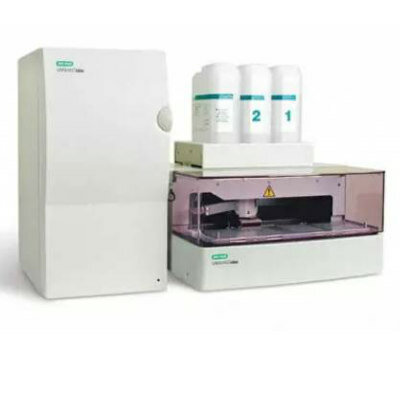FISH Method Developed for Analyzing Immune Response
|
By LabMedica International staff writers Posted on 30 May 2017 |
Researchers have developed a method to analyze hundreds of thousands of cells at once using FISH-Flow for concurrent detection of mRNA and protein markers in single cells using fluorescence in situ hybridization (FISH) and flow cytometry. The new protocol currently evaluates immune responses and could lead to faster and more accurate diagnoses of illnesses, including tuberculosis (TB) and cancers.
Researchers at Rutgers University developed the protocol to evaluate multitudes of cells at once for telltale mRNA species and proteins. The procedure currently provides an opportunity to observe how multiple kinds of immune cells are responding to a foreign substance (e.g. antigen), making it possible to detect the presence of disease earlier.
"This new process allows us to see how individual immune cells are reacting in real time without using artificial reagents that alter what the cells are doing when they respond to a foreign substance," said Maria Laura Gennaro, a professor at Rutgers' Public Health Research Institute (PHRI), who led development of the method with senior colleagues Yuri Bushkin, Richard Pine, and Sanjay Tyagi at PHRI. As the protocol could be used to identify indicators of other illnesses, they plan to study applying it to early diagnosis and treatment of various infectious and non-infectious lung diseases and certain cancers.
"This powerful diagnostic technology exploits a person's own immune system to assess their potential for developing a wide range of acute and chronic diseases – including those caused by infectious agents and those resulting from host dysfunction like cancer, asthma, or autoimmune disorders," said David Perlin, executive director of Rutgers’ PHRI.
The procedure can be particularly useful in finding ways to help identify people who are predisposed to developing TB, making it possible to treat them and help reduce the spread of the disease. Nearly 2 billion people worldwide are afflicted with latent TB, but many never develop full-blown TB. Currently, the only way to determine if latent TB is present is through skin and blood tests for immunological response to TB antigens. However, treatment is not widely offered to people with latent TB due to the prohibitive cost.
"If you can have a method that helps you determine who among the people who are latently affected by TB are predisposed to illness, you can target treatment of latent TB to those people and the risk of spread is reduced," Prof. Gennaro said.
The procedure detailed also includes a semi-automated version developed by Gennaro's research group in collaboration with engineers at San Jose, California-based BD Biosciences that makes the method faster and highly reproducible for clinical applications.
The study, by Arrigucci R et al, was published May 18, 2017, in the journal Nature Protocols.
Researchers at Rutgers University developed the protocol to evaluate multitudes of cells at once for telltale mRNA species and proteins. The procedure currently provides an opportunity to observe how multiple kinds of immune cells are responding to a foreign substance (e.g. antigen), making it possible to detect the presence of disease earlier.
"This new process allows us to see how individual immune cells are reacting in real time without using artificial reagents that alter what the cells are doing when they respond to a foreign substance," said Maria Laura Gennaro, a professor at Rutgers' Public Health Research Institute (PHRI), who led development of the method with senior colleagues Yuri Bushkin, Richard Pine, and Sanjay Tyagi at PHRI. As the protocol could be used to identify indicators of other illnesses, they plan to study applying it to early diagnosis and treatment of various infectious and non-infectious lung diseases and certain cancers.
"This powerful diagnostic technology exploits a person's own immune system to assess their potential for developing a wide range of acute and chronic diseases – including those caused by infectious agents and those resulting from host dysfunction like cancer, asthma, or autoimmune disorders," said David Perlin, executive director of Rutgers’ PHRI.
The procedure can be particularly useful in finding ways to help identify people who are predisposed to developing TB, making it possible to treat them and help reduce the spread of the disease. Nearly 2 billion people worldwide are afflicted with latent TB, but many never develop full-blown TB. Currently, the only way to determine if latent TB is present is through skin and blood tests for immunological response to TB antigens. However, treatment is not widely offered to people with latent TB due to the prohibitive cost.
"If you can have a method that helps you determine who among the people who are latently affected by TB are predisposed to illness, you can target treatment of latent TB to those people and the risk of spread is reduced," Prof. Gennaro said.
The procedure detailed also includes a semi-automated version developed by Gennaro's research group in collaboration with engineers at San Jose, California-based BD Biosciences that makes the method faster and highly reproducible for clinical applications.
The study, by Arrigucci R et al, was published May 18, 2017, in the journal Nature Protocols.
Latest Pathology News
- New WHO Reporting System for Lung Cytopathology to Enhance Diagnostic Accuracy
- Self-Taught AI Tool Diagnoses and Predicts Severity of Common Lung Cancer
- Novel AI-Powered Method for Tissue Analysis Improves Understanding of Disease Pathology
- Noninvasive Technology Detects Rare Cancer Cells in Blood
- AI Tool Detects Tiny Protein Clumps in Microscopy Images in Real-Time
- New Tool Enables Better Classification of Inherited Disease-Causing Variants
- Groundbreaking CRISPR Screen Technology Rapidly Determines Disease Mechanism from Tissues
- New AI Tool Classifies Brain Tumors More Quickly and Accurately
- AI Integrated With Optical Imaging Technology Enables Rapid Intraoperative Diagnosis
- HPV Self-Collection Solution Improves Access to Cervical Cancer Testing
- Hyperspectral Dark-Field Microscopy Enables Rapid and Accurate Identification of Cancerous Tissues
- AI Advancements Enable Leap into 3D Pathology
- New Blood Test Device Modeled on Leeches to Help Diagnose Malaria
- Robotic Blood Drawing Device to Revolutionize Sample Collection for Diagnostic Testing
- Use of DICOM Images for Pathology Diagnostics Marks Significant Step towards Standardization
- First of Its Kind Universal Tool to Revolutionize Sample Collection for Diagnostic Tests
Channels
Clinical Chemistry
view channel
New ADLM Guidance Provides Expert Recommendations on Clinical Testing For Respiratory Viral Infections
Respiratory tract infections, predominantly caused by viral pathogens, are a common reason for healthcare visits. Accurate and swift diagnosis of these infections is essential for optimal patient management.... Read more
3D Printed Point-Of-Care Mass Spectrometer Outperforms State-Of-The-Art Models
Mass spectrometry is a precise technique for identifying the chemical components of a sample and has significant potential for monitoring chronic illness health states, such as measuring hormone levels... Read more.jpg)
POC Biomedical Test Spins Water Droplet Using Sound Waves for Cancer Detection
Exosomes, tiny cellular bioparticles carrying a specific set of proteins, lipids, and genetic materials, play a crucial role in cell communication and hold promise for non-invasive diagnostics.... Read more
Highly Reliable Cell-Based Assay Enables Accurate Diagnosis of Endocrine Diseases
The conventional methods for measuring free cortisol, the body's stress hormone, from blood or saliva are quite demanding and require sample processing. The most common method, therefore, involves collecting... Read moreMolecular Diagnostics
view channel
Four-In-One Molecular Test Detects and Differentiates Among Most Prevalent Respiratory Viruses in 20 Minutes
The U.S. Centers for Disease Control and Prevention (CDC) has reported that respiratory diseases in the United States reached high levels during the recent autumn and winter seasons, with SARS-CoV-2 leading... Read more.jpeg)
First-Line PSA Testing More Cost-Effective Than First-Line MRI for Prostate Cancer Screening
Current prostate cancer (PCa) screening protocols typically begin with prostate-specific antigen (PSA) testing, which, if elevated, may lead to further assessment using multiparametric magnetic resonance... Read more
Proteomics Platform Identifies Proteins in Blood to Give Cancer Warning 7 Years before Diagnosis
To improve cancer survival rates, it's crucial to understand the disease during its initial stages. Research involving data from thousands of cancer patients has uncovered exciting findings about how blood... Read moreHematology
view channel
Next Generation Instrument Screens for Hemoglobin Disorders in Newborns
Hemoglobinopathies, the most widespread inherited conditions globally, affect about 7% of the population as carriers, with 2.7% of newborns being born with these conditions. The spectrum of clinical manifestations... Read more
First 4-in-1 Nucleic Acid Test for Arbovirus Screening to Reduce Risk of Transfusion-Transmitted Infections
Arboviruses represent an emerging global health threat, exacerbated by climate change and increased international travel that is facilitating their spread across new regions. Chikungunya, dengue, West... Read more
POC Finger-Prick Blood Test Determines Risk of Neutropenic Sepsis in Patients Undergoing Chemotherapy
Neutropenia, a decrease in neutrophils (a type of white blood cell crucial for fighting infections), is a frequent side effect of certain cancer treatments. This condition elevates the risk of infections,... Read more
First Affordable and Rapid Test for Beta Thalassemia Demonstrates 99% Diagnostic Accuracy
Hemoglobin disorders rank as some of the most prevalent monogenic diseases globally. Among various hemoglobin disorders, beta thalassemia, a hereditary blood disorder, affects about 1.5% of the world's... Read moreImmunology
view channel.jpg)
AI Tool Predicts Cancer Patients’ Response to Immunotherapy
Immune checkpoint inhibitors are a form of immunotherapy drug that enables immune cells to target and destroy cancer cells. At present, the Food and Drug Administration has approved two predictive biomarkers... Read more
Molecular Profiling Improves Diagnosis for Children with High Risk Cancers
Cancer remains the leading cause of disease-related death among children in most developed nations, and approximately one-fourth of these patients are diagnosed with aggressive, high-risk, or relapsed... Read morePathology
view channel
New WHO Reporting System for Lung Cytopathology to Enhance Diagnostic Accuracy
Lung cancer continues to be the most common cause of cancer-related deaths worldwide and ranks as the second most frequently diagnosed cancer in both men and women. The role of lung cytopathology, which... Read more
Self-Taught AI Tool Diagnoses and Predicts Severity of Common Lung Cancer
A computer program powered by artificial intelligence (AI) and trained on nearly half a million tissue images can effectively diagnose cases of adenocarcinoma, the most prevalent type of lung cancer.... Read more
Novel AI-Powered Method for Tissue Analysis Improves Understanding of Disease Pathology
Scientists at Brown University (Providence, RI, USA) and the University of Michigan (Ann Arbor, MI, USA) have created a groundbreaking computational technique to examine complex tissue data, potentially... Read moreTechnology
view channel
Microneedle Patch Detects Skin Cancer Early
Wearable bioelectronics has emerged as a significant innovation in healthcare, especially in the field of biosensing, providing a new method to monitor individual health for both diagnostic and therapeutic purposes.... Read more
New Diagnostic System Achieves PCR Testing Accuracy
While PCR tests are the gold standard of accuracy for virology testing, they come with limitations such as complexity, the need for skilled lab operators, and longer result times. They also require complex... Read moreIndustry
view channel
Roche and Hitachi High-Tech Extend 46-Year Partnership for Breakthroughs in Diagnostic Testing
Roche (Basel, Switzerland) and Hitachi High-Tech (Tokyo, Japan) have renewed their collaboration agreement, committing to a further 10 years of partnership. This extension brings together their long-standing... Read more
Danaher and Johns Hopkins University Collaborate to Improve Neurological Diagnosis
Unlike severe traumatic brain injury (TBI), mild TBI often does not show clear correlations with abnormalities detected through head computed tomography (CT) scans. Consequently, there is a pressing need... Read more
Beckman Coulter and MeMed Expand Host Immune Response Diagnostics Partnership
Beckman Coulter Diagnostics (Brea, CA, USA) and MeMed BV (Haifa, Israel) have expanded their host immune response diagnostics partnership. Beckman Coulter is now an authorized distributor of the MeMed... Read more_1.jpg)












.jpg)


